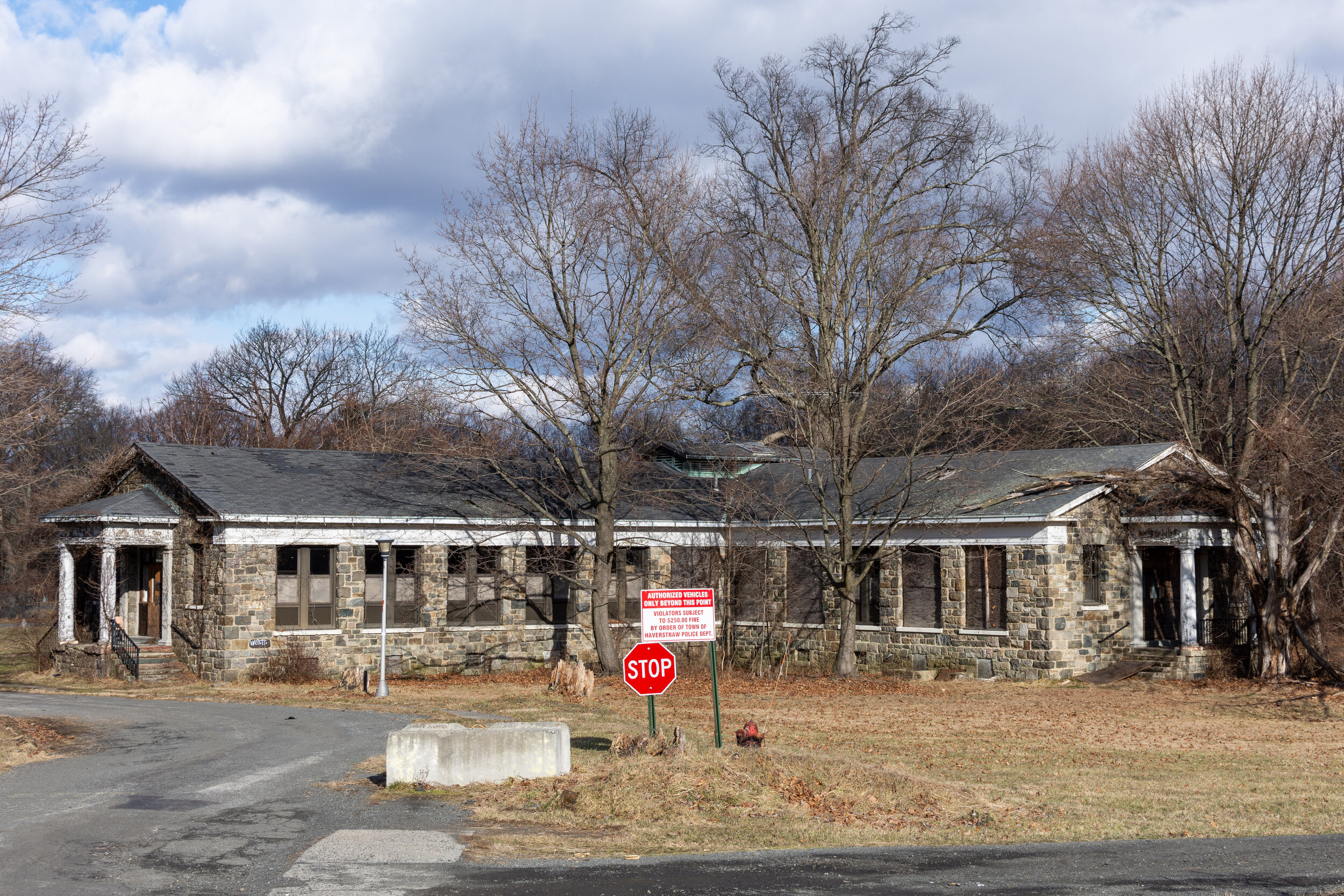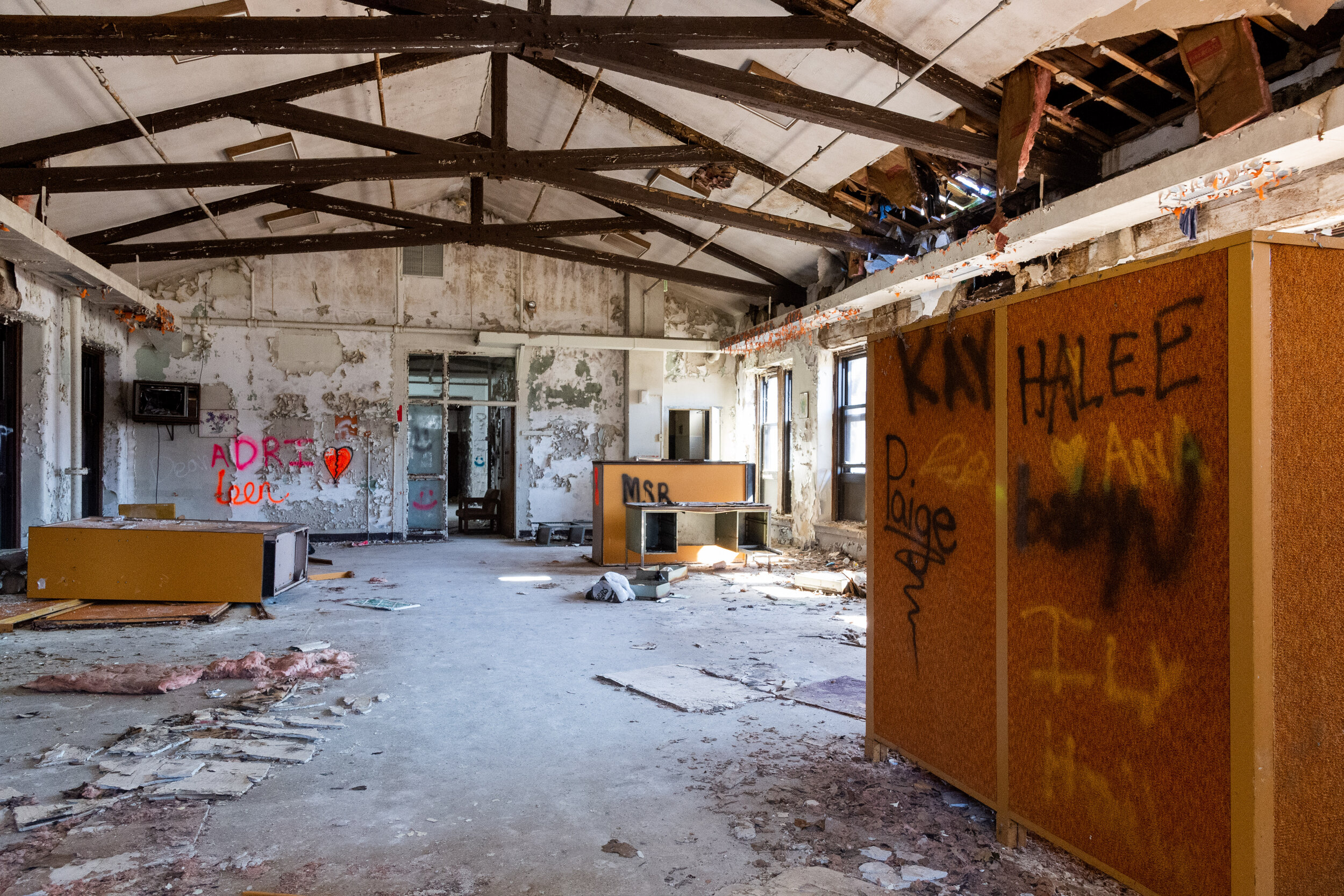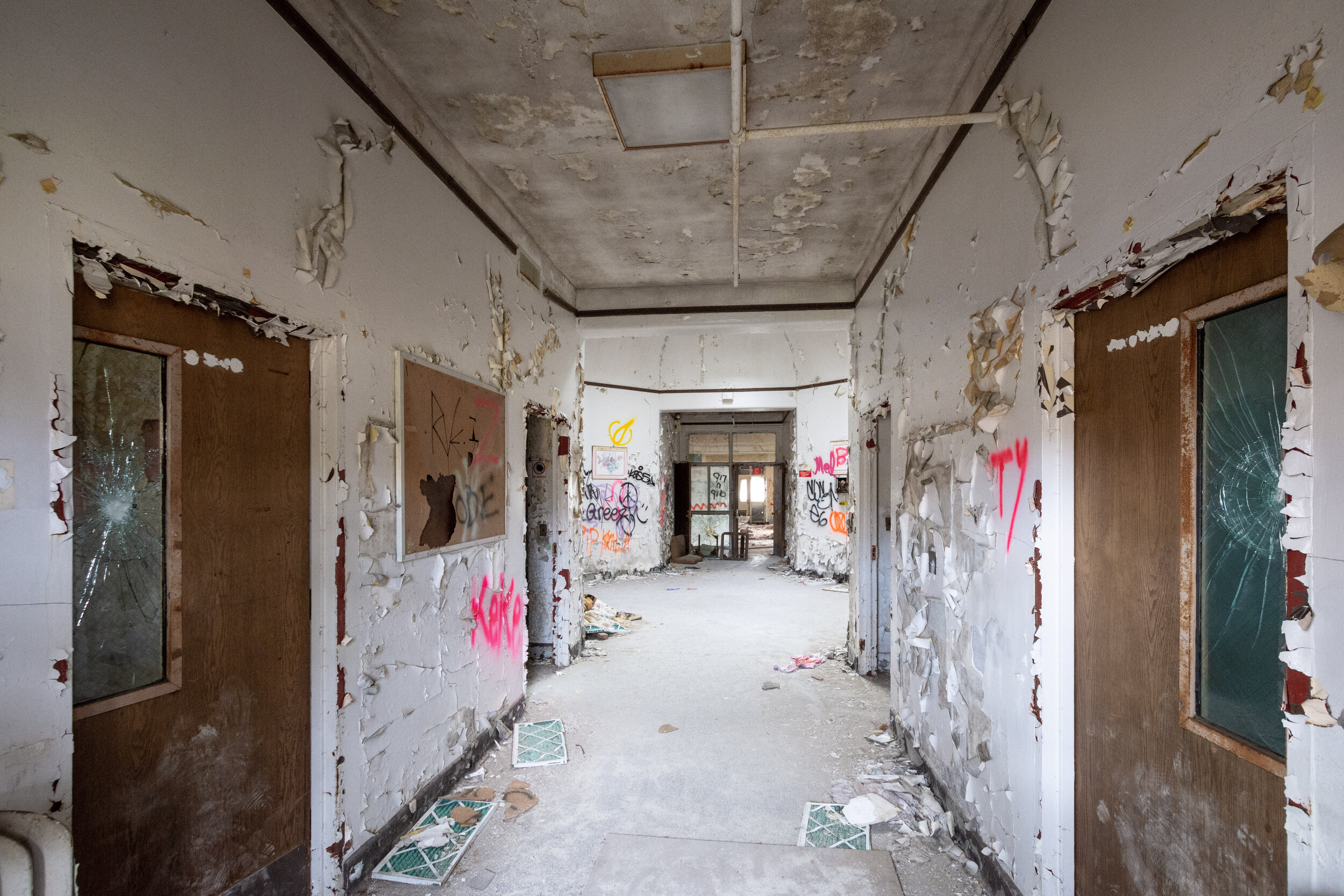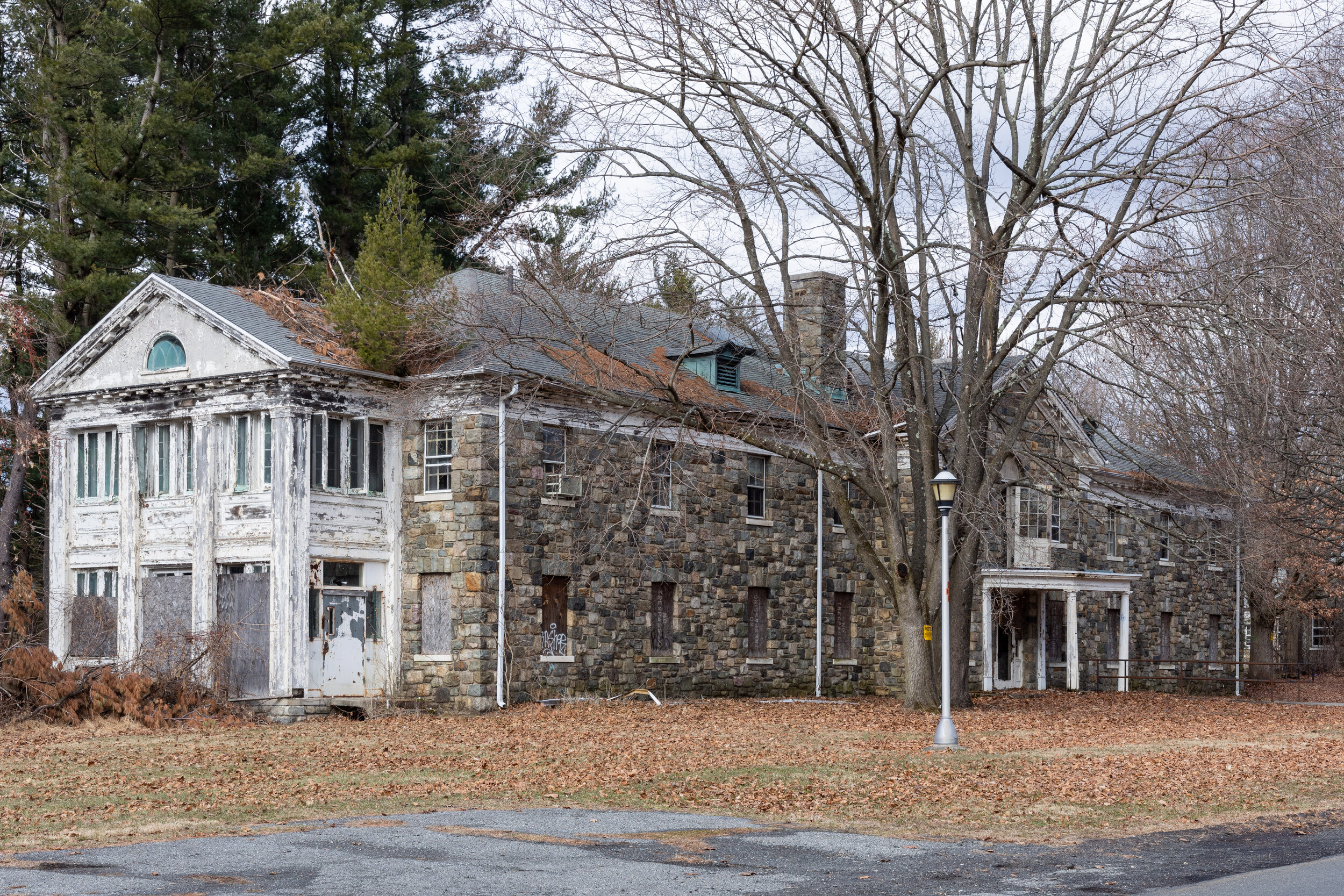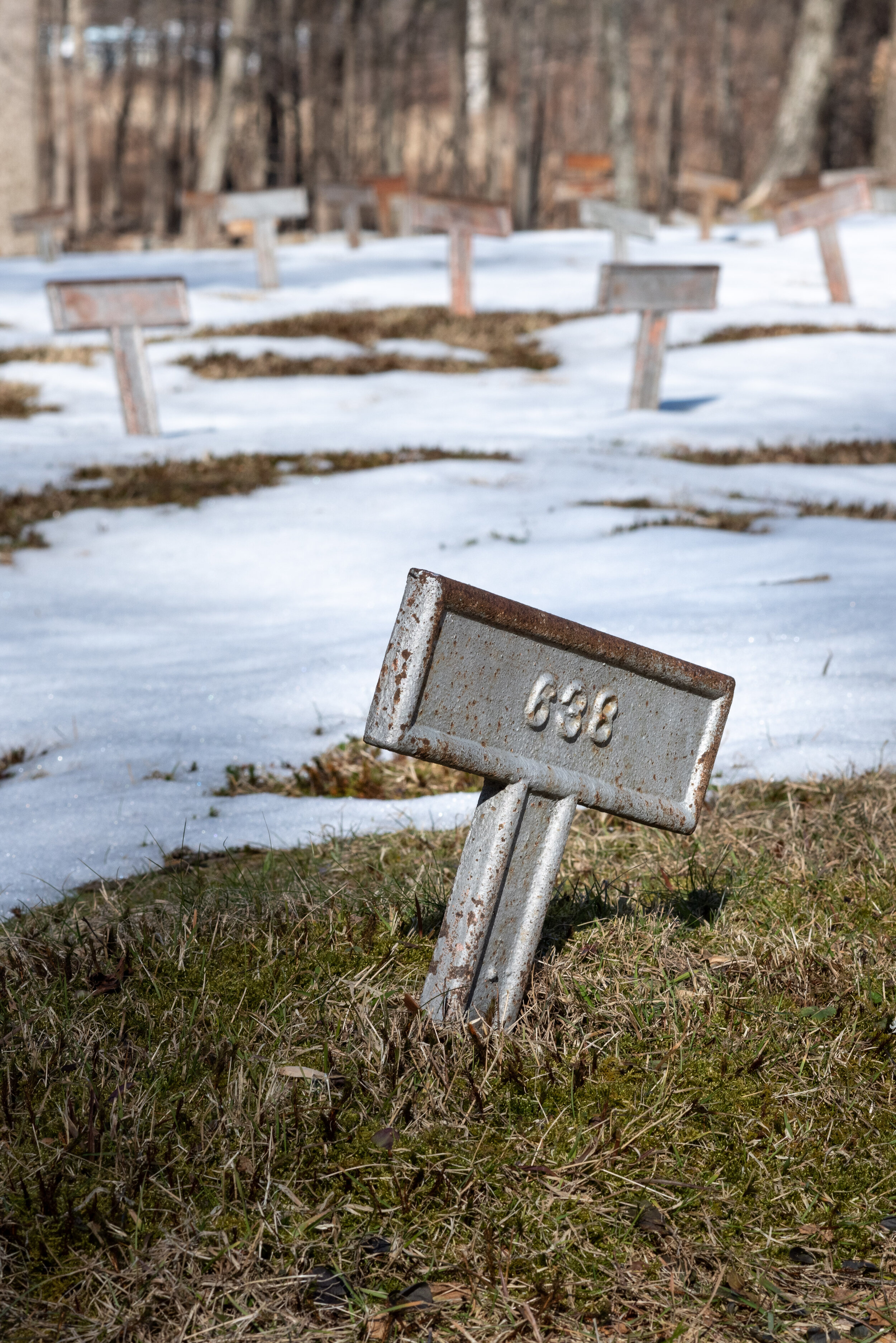Letchworth Village
An abandoned cottage plan asylum rots away, exposed to the elements in the Hudson River Valley.
Letchworth Village, located in Thiells, NY was one of the many state psychiatric facilities that once dotted the Hudson Valley landscape. The facility was mired in controversy as accounts of abuse and neglect were levied against it. Letchworth Village closed down in 1996, and a number of the buildings have since fallen into disrepair. The same problems that plagued other state mental institutions were no stranger to Letchworth Village, which was left underfunded, overcrowded, and ill-equipped to deal with the needs of its residents. Staff did their best, but there’s only so much you can provide without adequate funding.
The 2,000 + acres of Letchworth Village have been divided up in the years since the facility closed. I’ve organized my photos into multiple groups based on the residents which the buildings originally served. The buildings of the Female Infirm Group are still operated by the Hudson Valley DDSO (Developmental Disabilities Services Office). Part of the Girl’s Group is now the Fieldstone Middle School. The Adult Male Group was taken over by the Township of Stony Point for use as town offices, and the Adult Infirm group was turned into a golf course. This series explores the buildings and the remnants of patient life that remain as of winter 2021.
Boys’ group And Administration
The Boy’s Group is by far in the worst shape of all the sections that make up the campus. You can visit and walk around this area freely as it was turned into a park by Haverstraw Township. This area of the campus was also home to the multi-story hospital which provided medical services for the patients. Every building in this section has extensive damage and vandalism throughout. As you can see from the interior shots, the dormitories are completely open with space divided up by small cubicle-like structures. A central kitchen served meals, with each dormitory functioning as an independent unit. Abandoned recreational equipment and the remnants of a splash pool, playground, basketball courts, and chair swings offer a glimpse into the lives of the residents who once called Letchworth Village home.
While some of the administration and industrial buildings remain, they all are in various states of disrepair. The smokestack of the old power plant, long since dormant, stands off in the distance from the Girls’ Group. Letchworth Village lived up to its name, conceived as a self sufficient community that promoted occupational therapy. The village was once equipped with bakeries, laundry facilities, a power plant with its own rail spur, assembly halls, sewage treatment plant, and barns to support the many acres of farmland.
Just a side note – as a personal rule, I don’t trespass on private property if I can avoid it. I’m not into urbex and I don’t physically enter the buildings I shoot unless I’m allowed to do so. Any interior shots you see in this series were taken from outside the buildings through broken windows. When I first got to Letchworth Village, I had a great conversation with a man driving a Haverstraw Township truck about the architecture and history of the property from the steps of an abandoned dormitory. I was later yelled at by Haverstraw Police for being off the paved roadway, so your mileage may vary.
Adult Female and Girls’ Group
The goal of Letchworth Village was to group patients together in small dormitories and diminish the institutional feel signature of Kirkbride plan asylums. The asylum was seen as a model institution when it opened in 1911, readily equipped to handle a maximum of 3,000 patients. Letchworth Village reached maximum capacity by 1935. Female and male patients were split into different housing arrangements, with females on the lower half of the property and males on the upper half. A centralized utility and maintenance section served the entire complex. The Adult Female section is in great shape, all things considered, with much less damage than the Boy’s Group. This section seems to be used by the nearby Fieldstone Middle School for storage. The buildings are pretty well buttoned up, and the ones I could see into were piled high with school desks. The Fieldstone Middle School took over the Girls’ Group half of the property, stringing together multiple buildings into the current school.
The Old Letchworth Village Cemetery
Just a short distance down the road from Letchworth Village is “The Old Letchworth Village Cemetery”, which is the final resting place for over 800 former patients. Nestled back in the woods, the cemetery features a bronze plaque and small cast-iron grave markers that stretch over the hilltop upon which the cemetery sits. Small divots dot the landscape, made evident by the small patches of leftover snow. Walking into the cemetery, it’s hard not to feel a sense of strange calmness as you listen to the babbling brook and read the names of those who never left the state’s care. Some of the cast-iron markers stand next to granite gravestones, presumably installed by the deceased’s family. Most gravestones I looked at belonged to people not much older than myself. It also seemed that many of the Jewish residents were buried at the back of the cemetery, and there was no rhyme or reason to how the grave numbers were allocated. So many people who were just left to the state and abandoned by their families, with only a small cast-iron grave marker to be remembered by.
I think what I appreciate most about Letchworth Village is how vastly different each area of the property is from another. The Boys’ Group is abandoned, the Girls’ Group was repurposed into a school, the Adult Female group is abandoned but suspended in time, the Adult Male Group is now home to Haverstraw Township offices, the Male Infirm Group is a golf course, and the Female Infirm Group serves its original purpose as the Hudson Valley DDSO. While mental healthcare has rapidly advanced and moved away from institutionalization (which I think is for the better), it’s sad to see these structures which the public invested so much in fall to ruin.










